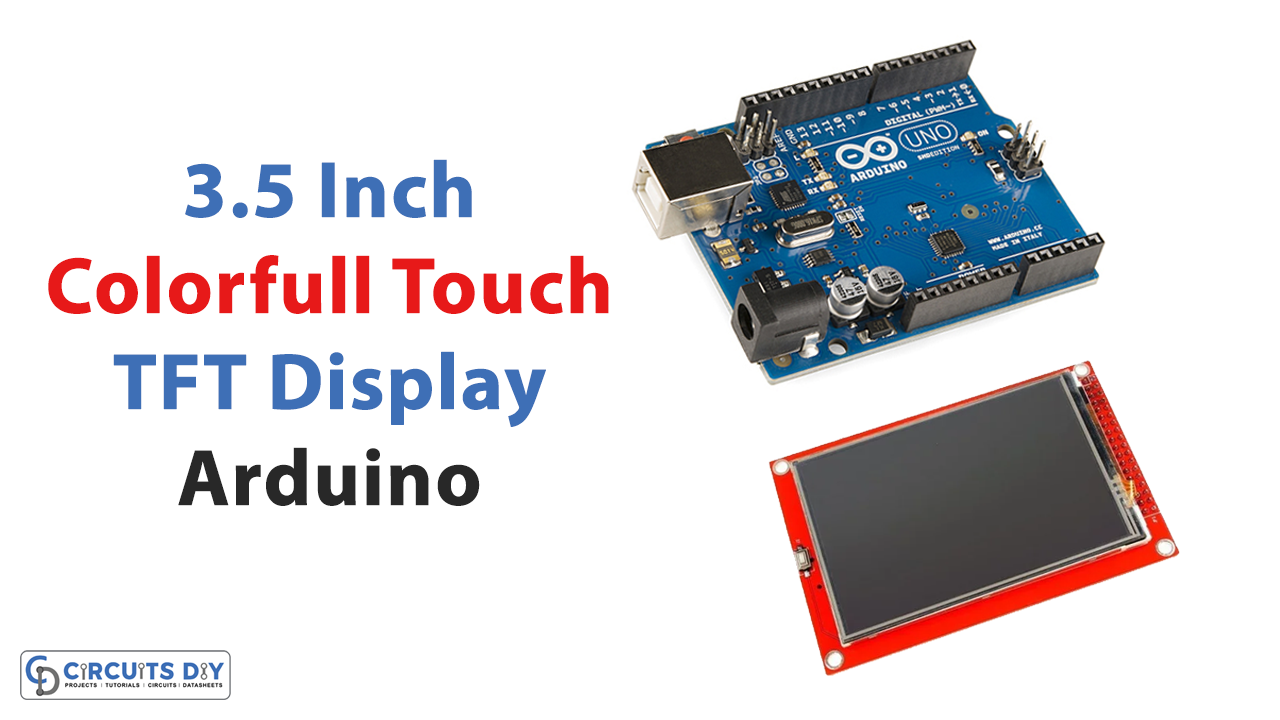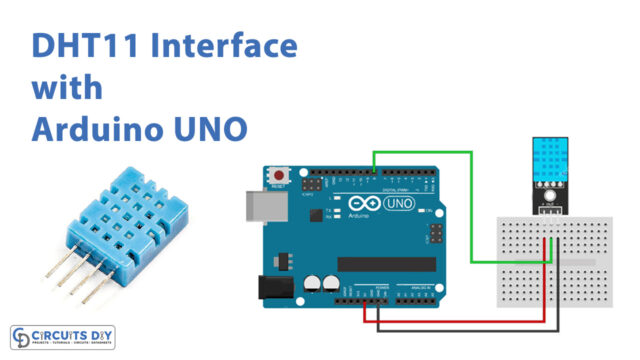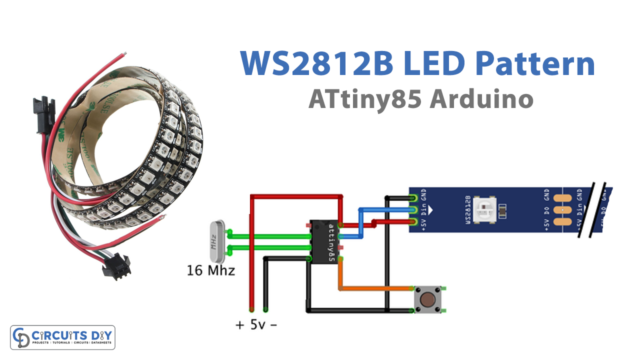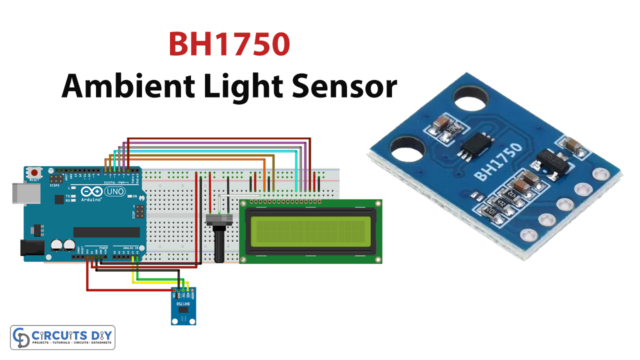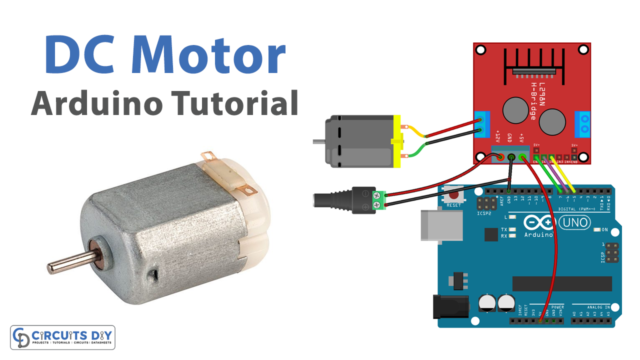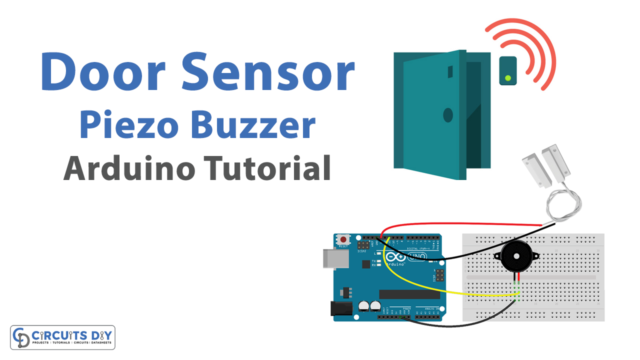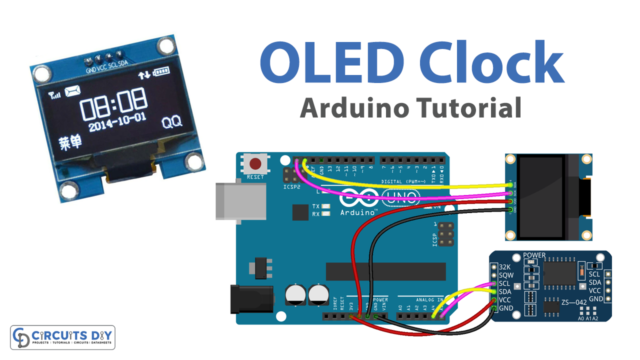Introduction
In this tutorial, we’ll be Interfacing 3.5 Inch Full-Color Touch TFT Display Shield with Arduino.
With the 3.5 Inch Full-Color Touch TFT Display Shield, you can display vibrant graphics, photos, and text on your projects, bringing them to life like never before. And with the touch functionality, you can create all sorts of interactive projects, from touch-based games and quizzes to touch-controlled home automation systems and beyond.
This blog post will take a closer look at the 3.5 full-color touch TFT display shield and its capabilities. We’ll also explore how to use it with your Arduino. So if you’re ready to add color and interactivity to your Arduino projects, read on!
What is a Color Touch Display?
A color touch display module is a type of user interface module that provides a touch screen interface with a color display. It allows users to interact with a device by touching buttons or icons on the screen. This module is commonly found in consumer electronics such as tablets and smartphones, but it can also be used in industrial control systems and other embedded products. It can provide a more intuitive and user-friendly way to interact with a device than buttons or a keyboard.
Hardware Components
You will require the following hardware for the Interfacing 3.5-inch Full-Color Touch TFT Display Shield with Arduino.
| S.no | Component | Value | Qty |
|---|---|---|---|
| 1. | Arduino UNO | – | 1 |
| 2. | Full-Color Touch TFT Display Module | 3.5 inch | 1 |
| 3 | Breadboard | – | 1 |
| 4. | Jumper Wires | – | 1 |
3.5” Touch TFT Display with Arduino
Now that you have understood the full-touch TFT display shield, it’s time to interface with the Arduino. In order to do that, follow the given steps:
Schematic
Make connections according to the circuit diagram given below.
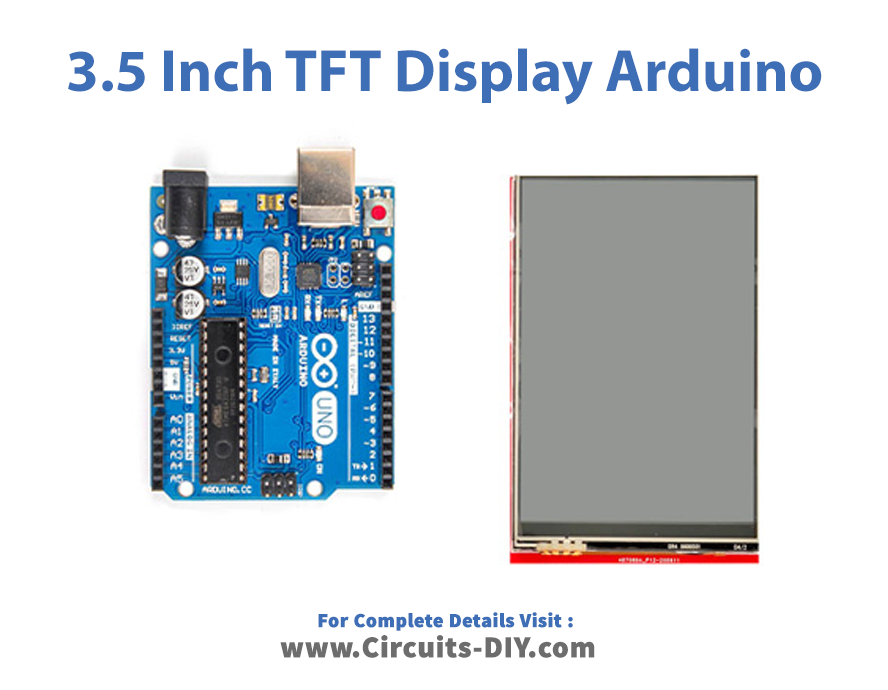
Installing Arduino IDE
First, you need to install Arduino IDE Software from its official website Arduino. Here is a simple step-by-step guide on “How to install Arduino IDE“.
Code
Now copy the following code and upload it to Arduino IDE Software.
/*
modified on March 08, 2021
by MohammedDamirchi from https://github.com/arduino-libraries/LiquidCrystal
Home
*/
// IMPORTANT: LCDWIKI_KBV LIBRARY MUST BE SPECIFICALLY
// CONFIGURED FOR EITHER THE TFT SHIELD OR THE BREAKOUT BOARD.
//This program is a demo of how to use most of the functions
//of the library with a supported display modules.
//Set the pins to the correct ones for your development shield or breakout board.
//when using the BREAKOUT BOARD only and using these 8 data lines to the LCD,
//pin usage as follow:
// CS CD WR RD RST D0 D1 D2 D3 D4 D5 D6 D7
//Arduino Uno A3 A2 A1 A0 A4 8 9 2 3 4 5 6 7
//Arduino Mega A3 A2 A1 A0 A4 8 9 2 3 4 5 6 7
//the 16bit mode only use in Mega.you must modify the mode in the file of lcd_mode.h
//when using the BREAKOUT BOARD only and using these 16 data lines to the LCD,
//pin usage as follow:
// CS CD WR RD RST D0 D1 D2 D3 D4 D5 D6 D7 D8 D9 D10 D11 D12 D13 D14 D15
//Arduino Mega 40 38 39 44 41 37 36 35 34 33 32 31 30 22 23 24 25 26 27 28 29
//Remember to set the pins to suit your display module!
#include <LCDWIKI_GUI.h> //Core graphics library
#include <LCDWIKI_KBV.h> //Hardware-specific library
//the definiens of 8bit mode as follow:
//if the IC model is known or the modules is unreadable,you can use this constructed function
//LCDWIKI_KBV my_lcd(ILI9341,A3,A2,A1,A0,A4); //model,cs,cd,wr,rd,reset
//LCDWIKI_KBV my_lcd(ILI9325,A3,A2,A1,A0,A4); //model,cs,cd,wr,rd,reset
//LCDWIKI_KBV my_lcd(ILI9328,A3,A2,A1,A0,A4); //model,cs,cd,wr,rd,reset
//LCDWIKI_KBV my_lcd(HX8357D,A3,A2,A1,A0,A4); //model,cs,cd,wr,rd,reset
//LCDWIKI_KBV my_lcd(HX8347G,A3,A2,A1,A0,A4); //model,cs,cd,wr,rd,reset
//LCDWIKI_KBV my_lcd(HX8347I,A3,A2,A1,A0,A4); //model,cs,cd,wr,rd,reset
LCDWIKI_KBV my_lcd(ILI9486,A3,A2,A1,A0,A4); //model,cs,cd,wr,rd,reset
//LCDWIKI_KBV my_lcd(ST7735S,A3,A2,A1,A0,A4); //model,cs,cd,wr,rd,reset
//if the IC model is not known and the modules is readable,you can use this constructed function
//LCDWIKI_KBV my_lcd(240,320,A3,A2,A1,A0,A4);//width,height,cs,cd,wr,rd,reset
//LCDWIKI_KBV my_lcd(320,480,A3,A2,A1,A0,A4);//width,height,cs,cd,wr,rd,reset
//the definiens of 16bit mode as follow:
//if the IC model is known or the modules is unreadable,you can use this constructed function
//LCDWIKI_KBV my_lcd(ILI9341,40,38,39,44,41); //model,cs,cd,wr,rd,reset
//LCDWIKI_KBV my_lcd(ILI9325,40,38,39,44,41); //model,cs,cd,wr,rd,reset
//LCDWIKI_KBV my_lcd(ILI9328,40,38,39,44,41); //model,cs,cd,wr,rd,reset
//LCDWIKI_KBV my_lcd(HX8357D,40,38,39,44,41); //model,cs,cd,wr,rd,reset
//LCDWIKI_KBV my_lcd(HX8347G,40,38,39,44,41); //model,cs,cd,wr,rd,reset
//LCDWIKI_KBV my_lcd(HX8347I,40,38,39,44,41); //model,cs,cd,wr,rd,reset
//LCDWIKI_KBV my_lcd(ILI9486,40,38,39,44,41); //model,cs,cd,wr,rd,reset
//LCDWIKI_KBV mylcd(ILI9488,40,38,39,44,41); //model,cs,cd,wr,rd,reset
//LCDWIKI_KBV mylcd(ILI9481,40,38,39,44,41); //model,cs,cd,wr,rd,reset
//LCDWIKI_KBV my_lcd(ST7735S,40,38,39,44,41); //model,cs,cd,wr,rd,reset
//if the IC model is not known and the modules is readable,you can use this constructed function
//LCDWIKI_KBV my_lcd(240,320,40,38,39,44,41);//width,height,cs,cd,wr,rd,reset for
//LCDWIKI_KBV my_lcd(320,480,40,38,39,44,41);//width,height,cs,cd,wr,rd,reset
//display main surface
unsigned long show_text(void)
{
unsigned long time_start = micros();
my_lcd.Set_Draw_color(32, 0,255);
my_lcd.Fill_Rectangle(0, 0, my_lcd.Get_Display_Width()-1, 14);
my_lcd.Set_Text_colour(0, 255, 0);
my_lcd.Set_Text_Size(1);
my_lcd.Set_Text_Mode(1);
my_lcd.Print_String("* Universal Color TFT Display Library *", CENTER, 3);
my_lcd.Set_Draw_color(128, 128, 128);
my_lcd.Fill_Rectangle(0, my_lcd.Get_Display_Height()-15, my_lcd.Get_Display_Width()-1, my_lcd.Get_Display_Height()-1);
my_lcd.Set_Text_colour(255, 255, 255);
my_lcd.Set_Text_Size(1);
my_lcd.Set_Text_Mode(1);
my_lcd.Print_String("<http://abcdefghijklmnopq.1234567890.com>", CENTER, my_lcd.Get_Display_Height()-11);
my_lcd.Set_Draw_color(255, 0, 0);
my_lcd.Draw_Rectangle(0, 15, my_lcd.Get_Display_Width()-1, my_lcd.Get_Display_Height()-16);
return micros() - time_start;
}
//display triangle functions
unsigned long show_triangle_function(void)
{
uint16_t i;
unsigned long time_start = micros();
// Draw crosshairs
my_lcd.Set_Draw_color(0, 0, 255);
my_lcd.Draw_Fast_VLine(my_lcd.Get_Display_Width()/2-1, 16, my_lcd.Get_Display_Height()- 32);
my_lcd.Draw_Fast_HLine(1, my_lcd.Get_Display_Height()/2-1, my_lcd.Get_Display_Width()-2);
for(i = 1;i <= (my_lcd.Get_Display_Height()- 32)/2/10;i++)
{
my_lcd.Draw_Fast_HLine(my_lcd.Get_Display_Width()/2-1-2, my_lcd.Get_Display_Height()/2-1-i*10, 5);
my_lcd.Draw_Fast_HLine(my_lcd.Get_Display_Width()/2-1-2, my_lcd.Get_Display_Height()/2-1+i*10, 5);
}
for(i = 1;i <= (my_lcd.Get_Display_Width()-2)/2/10;i++)
{
my_lcd.Draw_Fast_VLine(my_lcd.Get_Display_Width()/2-1-i*10, my_lcd.Get_Display_Height()/2-1-2, 5);
my_lcd.Draw_Fast_VLine(my_lcd.Get_Display_Width()/2-1+i*10, my_lcd.Get_Display_Height()/2-1-2, 5);
}
// Draw sin lines
my_lcd.Set_Text_colour(0, 255, 255);
my_lcd.Set_Text_Back_colour(0,0,0);
my_lcd.Set_Text_Size(1);
my_lcd.Set_Text_Mode(0);
my_lcd.Print_String("sin",5,17);
my_lcd.Set_Draw_color(0, 255, 255);
for (i=1; i<my_lcd.Get_Display_Width()-2; i++)
{
my_lcd.Draw_Pixel(i,my_lcd.Get_Display_Height()/2-1+(sin(((i*1.13)*3.14)/180)*95));
}
// Draw cos lines
my_lcd.Set_Text_colour(0, 255, 0);
my_lcd.Set_Text_Back_colour(0,0,0);
my_lcd.Set_Text_Size(1);
my_lcd.Set_Text_Mode(0);
my_lcd.Print_String("cos",5,25);
my_lcd.Set_Draw_color(0, 255, 0);
for (i=1; i<my_lcd.Get_Display_Width()-2; i++)
{
my_lcd.Draw_Pixel(i,my_lcd.Get_Display_Height()/2-1+(cos(((i*1.13)*3.14)/180)*95));
}
// Draw tan lines
my_lcd.Set_Text_colour(255, 255, 0);
my_lcd.Set_Text_Back_colour(0,0,0);
my_lcd.Set_Text_Size(1);
my_lcd.Set_Text_Mode(0);
my_lcd.Print_String("tan",5,33);
my_lcd.Set_Draw_color(255, 255, 0);
for (i=1; i<my_lcd.Get_Display_Width()-2; i++)
{
my_lcd.Draw_Pixel(i,my_lcd.Get_Display_Height()/2-1+(tan(((i*1.13)*3.14)/180)*10));
}
// Draw cot lines
my_lcd.Set_Text_colour(255, 0, 0);
my_lcd.Set_Text_Back_colour(0,0,0);
my_lcd.Set_Text_Size(1);
my_lcd.Set_Text_Mode(0);
my_lcd.Print_String("cot",5,41);
my_lcd.Set_Draw_color(255, 0, 0);
for (i=1; i<my_lcd.Get_Display_Width()-2; i++)
{
my_lcd.Draw_Pixel(i,my_lcd.Get_Display_Height()/2-1+1/(tan(((i*1.13)*3.14)/180)*0.1));
}
return micros()-time_start;
}
// Draw a moving sinewave
unsigned long show_sinewave(void)
{
uint16_t buf[my_lcd.Get_Display_Width()-2],x = 1,i,y;
unsigned long time_start = micros();
int16_t wid = my_lcd.Get_Display_Width();
int16_t t;
float k;
if(wid == 320)
{
t = 20;
k = 1.1;
}
else
{
t = 15;
k = 0.7;
}
my_lcd.Set_Draw_color(0, 0, 255);
my_lcd.Draw_Fast_VLine(my_lcd.Get_Display_Width()/2-1, 16, my_lcd.Get_Display_Height()- 32);
my_lcd.Draw_Fast_HLine(1, my_lcd.Get_Display_Height()/2-1, my_lcd.Get_Display_Width()-2);
for (i=1; i<((my_lcd.Get_Display_Width()-2)*t); i++)
{
x++;
if (x==my_lcd.Get_Display_Width()-1)
{
x=1;
}
if (i>my_lcd.Get_Display_Width()-1)
{
if ((x==my_lcd.Get_Display_Width()/2-1)||(buf[x-1]==my_lcd.Get_Display_Height()/2-1))
{
my_lcd.Set_Draw_color(0, 0, 255);
}
else
{
my_lcd.Set_Draw_color(0, 0, 0);
}
my_lcd.Draw_Pixel(x,buf[x-1]);
}
my_lcd.Set_Draw_color(255, 64, 255);
y=my_lcd.Get_Display_Height()/2-1+(sin(((i*k)*3.14)/180)*(90-(i/100)));
my_lcd.Draw_Pixel(x,y);
buf[x-1]=y;
}
return micros()- time_start;
}
// Draw some filled rectangles
unsigned long show_fill_rectangle(void)
{
uint16_t i;
unsigned long time_start = micros();
uint16_t side_len = (my_lcd.Get_Display_Height()-40)/5;
uint16_t x_spec = (my_lcd.Get_Display_Width()-5*side_len)/2;
uint16_t y_spec = (my_lcd.Get_Display_Height()-5*side_len)/2;
for(i = 0;i<5;i++)
{
switch (i)
{
case 0:
my_lcd.Set_Draw_color(255,0,255);
break;
case 1:
my_lcd.Set_Draw_color(255,0,0);
break;
case 2:
my_lcd.Set_Draw_color(0,255,0);
break;
case 3:
my_lcd.Set_Draw_color(0,0,255);
break;
case 4:
my_lcd.Set_Draw_color(255,255,0);
break;
default:
break;
}
my_lcd.Fill_Rectangle(x_spec+i*side_len-1, y_spec+i*side_len-1, x_spec+(i+1)*side_len-1, y_spec+(i+1)*side_len-1);
my_lcd.Fill_Rectangle(x_spec+i*side_len-1, y_spec+(5-i)*side_len-1, x_spec+(i+1)*side_len-1, y_spec+(4-i)*side_len-1);
}
return micros()- time_start;
}
// Draw some filled round rectangles
unsigned long show_fill_round_rectangle(void)
{
uint16_t i;
unsigned long time_start = micros();
uint16_t side_len = (my_lcd.Get_Display_Height()-40)/5;
uint16_t x_spec = (my_lcd.Get_Display_Width()-5*side_len)/2;
uint16_t y_spec = (my_lcd.Get_Display_Height()-5*side_len)/2;
for(i = 0;i<5;i++)
{
switch (i)
{
case 0:
my_lcd.Set_Draw_color(255,0,255);
break;
case 1:
my_lcd.Set_Draw_color(255,0,0);
break;
case 2:
my_lcd.Set_Draw_color(0,255,0);
break;
case 3:
my_lcd.Set_Draw_color(0,0,255);
break;
case 4:
my_lcd.Set_Draw_color(255,255,0);
break;
default:
break;
}
my_lcd.Fill_Round_Rectangle(x_spec+i*side_len-1, y_spec+i*side_len-1, x_spec+(i+1)*side_len-1, y_spec+(i+1)*side_len-1,10);
my_lcd.Fill_Round_Rectangle(x_spec+i*side_len-1, y_spec+(5-i)*side_len-1, x_spec+(i+1)*side_len-1, y_spec+(4-i)*side_len-1,10);
}
return micros()- time_start;
}
// Draw some filled circles
unsigned long show_fill_circle(void)
{
uint16_t i;
unsigned long time_start = micros();
uint16_t r_len = (my_lcd.Get_Display_Height()-40)/5/2;
uint16_t x_spec = (my_lcd.Get_Display_Width()-5*r_len*2)/2;
uint16_t y_spec = (my_lcd.Get_Display_Height()-5*r_len*2)/2;
for(i = 0;i<5;i++)
{
switch (i)
{
case 0:
my_lcd.Set_Draw_color(255,0,255);
break;
case 1:
my_lcd.Set_Draw_color(255,0,0);
break;
case 2:
my_lcd.Set_Draw_color(0,255,0);
break;
case 3:
my_lcd.Set_Draw_color(0,0,255);
break;
case 4:
my_lcd.Set_Draw_color(255,255,0);
break;
default:
break;
}
my_lcd.Fill_Circle(x_spec+r_len+i*r_len*2-1, y_spec+r_len+i*r_len*2-1,r_len);
my_lcd.Fill_Circle(x_spec+r_len+i*r_len*2-1, y_spec+(5-i)*r_len*2-r_len-1,r_len);
}
return micros()- time_start;
}
// Draw some filled triangles
unsigned long show_fill_triangle(void)
{
uint16_t i;
unsigned long time_start = micros();
uint16_t h_len = (my_lcd.Get_Display_Height()-40)/5;
uint16_t side_len = (h_len*115)/100;
uint16_t x_spec = (my_lcd.Get_Display_Width()-5*side_len)/2;
uint16_t y_spec = (my_lcd.Get_Display_Height()-5*h_len)/2;
for(i = 0;i<5;i++)
{
switch (i)
{
case 0:
my_lcd.Set_Draw_color(255,0,255);
break;
case 1:
my_lcd.Set_Draw_color(255,0,0);
break;
case 2:
my_lcd.Set_Draw_color(0,255,0);
break;
case 3:
my_lcd.Set_Draw_color(0,0,255);
break;
case 4:
my_lcd.Set_Draw_color(255,255,0);
break;
default:
break;
}
my_lcd.Fill_Triangle(x_spec+i*side_len-1,y_spec+(i+1)*h_len-1,x_spec+side_len/2+i*side_len-1,y_spec+i*h_len-1,x_spec+(i+1)*side_len-1,y_spec+(i+1)*h_len-1);
my_lcd.Fill_Triangle(x_spec+i*side_len-1,y_spec+(5-i)*h_len-1,x_spec+side_len/2+i*side_len-1,y_spec+(4-i)*h_len-1,x_spec+(i+1)*side_len-1,y_spec+(5-i)*h_len-1);
}
return micros()- time_start;
}
// Draw some lines in a pattern
unsigned long show_grid_lines(void)
{
uint16_t i;
unsigned long time_start = micros();
int16_t wid = my_lcd.Get_Display_Width();
float k;
if(wid == 320)
{
k = 1.44;
}
else
{
k = 1.6;
}
my_lcd.Set_Draw_color(255,0,0);
for (i=16; i<my_lcd.Get_Display_Height()-17; i+=5)
{
my_lcd.Draw_Line(1, i, (i*k)-10, my_lcd.Get_Display_Height()-17);
}
my_lcd.Set_Draw_color(255,0,0);
for (i=my_lcd.Get_Display_Height()-17; i>16; i-=5)
{
my_lcd.Draw_Line(my_lcd.Get_Display_Width()-2, i, (i*k)-11, 16);
}
my_lcd.Set_Draw_color(0,255,255);
for (i=my_lcd.Get_Display_Height()-16; i>16; i-=5)
{
my_lcd.Draw_Line(1, i, (my_lcd.Get_Display_Height()-17)*k+10-(i*k), 16);
}
my_lcd.Set_Draw_color(0,255,255);
for (int i=15; i<my_lcd.Get_Display_Height()-17; i+=5)
{
my_lcd.Draw_Line(my_lcd.Get_Display_Width()-2, i, (my_lcd.Get_Display_Height()-17)*k+10-(i*k), my_lcd.Get_Display_Height()-17);
}
return micros()- time_start;
}
// Draw some random pixels
unsigned long show_random_pixels(void)
{
uint16_t i;
unsigned long time_start = micros();
for(i = 0;i< 10000;i++)
{
my_lcd.Set_Draw_color(random(255),random(255),random(255));
my_lcd.Draw_Pixel(2+random(my_lcd.Get_Display_Width()-4),17+random(my_lcd.Get_Display_Height()-34));
}
return micros()- time_start;
}
// Draw some random lines
unsigned long show_random_lines(void)
{
uint16_t i;
unsigned long time_start = micros();
for(i = 0;i< 300;i++)
{
my_lcd.Set_Draw_color(random(255),random(255),random(255));
my_lcd.Draw_Line(2+random(my_lcd.Get_Display_Width()-4),17+random(my_lcd.Get_Display_Height()-34),2+random(my_lcd.Get_Display_Width()-4),17+random(my_lcd.Get_Display_Height()-34));
}
return micros()- time_start;
}
// Draw some random rectangles
unsigned long show_random_rectangles(void)
{
uint16_t i;
unsigned long time_start = micros();
for(i = 0;i< 150;i++)
{
my_lcd.Set_Draw_color(random(255),random(255),random(255));
my_lcd.Draw_Rectangle(2+random(my_lcd.Get_Display_Width()-4),17+random(my_lcd.Get_Display_Height()-34),2+random(my_lcd.Get_Display_Width()-4),17+random(my_lcd.Get_Display_Height()-34));
}
return micros()- time_start;
}
// Draw some random round rectangles
unsigned long show_random_round_rectangles(void)
{
uint16_t i;
unsigned long time_start = micros();
for(i = 0;i< 150;i++)
{
my_lcd.Set_Draw_color(random(255),random(255),random(255));
my_lcd.Draw_Round_Rectangle(2+random(my_lcd.Get_Display_Width()-4),17+random(my_lcd.Get_Display_Height()-34),2+random(my_lcd.Get_Display_Width()-4),17+random(my_lcd.Get_Display_Height()-34),5);
}
return micros()- time_start;
}
// Draw some random circles
unsigned long show_random_circles(void)
{
uint16_t i;
unsigned long time_start = micros();
for(i = 0;i< 150;i++)
{
my_lcd.Set_Draw_color(random(255),random(255),random(255));
my_lcd.Draw_Circle(41+random(my_lcd.Get_Display_Width()-82), 56+random(my_lcd.Get_Display_Height()-112), random(40));
}
return micros()- time_start;
}
// Draw some random triangles
unsigned long show_random_triangles(void)
{
uint16_t i;
unsigned long time_start = micros();
for(i = 0;i< 150;i++)
{
my_lcd.Set_Draw_color(random(255),random(255),random(255));
my_lcd.Draw_Triangle(2+random(my_lcd.Get_Display_Width()-4),17+random(my_lcd.Get_Display_Height()-34),2+random(my_lcd.Get_Display_Width()-4),17+random(my_lcd.Get_Display_Height()-34),2+random(my_lcd.Get_Display_Width()-4),17+random(my_lcd.Get_Display_Height()-34));
}
return micros()- time_start;
}
// Draw some random bit maps
unsigned long show_random_bit_map(void)
{
uint16_t buf[48],i;
unsigned long time_start = micros();
int16_t len = (my_lcd.Get_Display_Height()*3/4)/6;
for(i = 0;i< 48; i++)
{
my_lcd.Set_Draw_color(random(255), random(255), random(255));
buf[i] = my_lcd.Get_Draw_color();
}
for(i = 1;i<=6;i++)
{
my_lcd.Draw_Bit_Map(my_lcd.Get_Display_Width()/2-1-((len/2)*4/3)*i, my_lcd.Get_Display_Height()/2-1-(len/2)*i, 8, 6, buf, i*(len/6));
delay(100);
}
return micros()- time_start;
}
//Clear the screen
void clear_screen(void)
{
delay(2000);
my_lcd.Set_Draw_color(0, 0, 0);
my_lcd.Fill_Rectangle(1, 16, my_lcd.Get_Display_Width()-2, my_lcd.Get_Display_Height()-17);
}
unsigned long (*show_function[])(void) =
{
show_text,
show_triangle_function,
show_sinewave,
show_fill_rectangle,
show_fill_round_rectangle,
show_fill_circle,
show_fill_triangle,
show_grid_lines,
show_random_pixels,
show_random_lines,
show_random_rectangles,
show_random_round_rectangles,
show_random_circles,
show_random_triangles,
show_random_bit_map,
};
uint8_t *show_str[]=
{
"show text :",
"show triangle function :",
"show sinewave :",
"show fill rectangle :",
"show fill round rectangle :",
"show fill circle :",
"show fill triangle :",
"show grid lines :",
"show random pixels :",
"show random lines :",
"show random rectangles :",
"show random round rectangles :",
"show random circles :",
"show random triangles :",
"show random bit_map :"
};
//display the running time of programs
unsigned long show_total_time(void)
{
uint16_t i;
unsigned long buf[15];
unsigned long time_start = micros();
for(i = 0;i< 15;i++)
{
buf[i] = show_function[i]();
clear_screen();
}
for(i = 0;i<15; i++)
{
my_lcd.Set_Text_colour(255, 165, 0);
my_lcd.Set_Text_Size(1);
my_lcd.Set_Text_Mode(1);
my_lcd.Print_String(show_str[i], (my_lcd.Get_Display_Width()-260)/2-1, (my_lcd.Get_Display_Height()-150)/2+i*10-1);
my_lcd.Set_Text_colour(0, 255, 0);
my_lcd.Print_Number_Int(buf[i], (my_lcd.Get_Display_Width()-260)/2-1+200, (my_lcd.Get_Display_Height()-150)/2+i*10-1, 0, ' ', 10);
}
delay(5000);
return micros()- time_start;
}
//display ending and total running time
void show_end(unsigned long run_time)
{
my_lcd.Fill_Screen(0, 255, 255);
my_lcd.Set_Draw_color(255, 0, 0);
my_lcd.Fill_Round_Rectangle(my_lcd.Get_Display_Width()/2-1-120+1, my_lcd.Get_Display_Height()/2-1-60+1, my_lcd.Get_Display_Width()/2-1+120-1, my_lcd.Get_Display_Height()/2-1+60-1,5);
my_lcd.Set_Text_colour(0, 255, 255);
my_lcd.Set_Text_Size(1);
my_lcd.Set_Text_Mode(1);
my_lcd.Print_String("Running over!", CENTER, my_lcd.Get_Display_Height()/2-1-40);
my_lcd.Print_String("That's ok!", CENTER, my_lcd.Get_Display_Height()/2-1-30);
my_lcd.Print_String("After a few seconds,", CENTER, my_lcd.Get_Display_Height()/2-1-20);
my_lcd.Print_String("it will restart.", CENTER, my_lcd.Get_Display_Height()/2-1-10);
my_lcd.Print_String("Please wait ...", CENTER, my_lcd.Get_Display_Height()/2-1);
my_lcd.Set_Text_colour(255, 255, 0);
my_lcd.Print_String("Total runtime(us): ", my_lcd.Get_Display_Width()/2-1-90, my_lcd.Get_Display_Height()/2-1+40);
my_lcd.Set_Text_colour(0, 255, 0);
my_lcd.Print_Number_Int(run_time, my_lcd.Get_Display_Width()/2-1+30, my_lcd.Get_Display_Height()/2-1+40, 0, ' ', 10);
delay(10000);
}
void setup()
{
my_lcd.Init_LCD();
my_lcd.Fill_Screen(0x0);
my_lcd.Set_Rotation(1);
}
void loop()
{
unsigned long total_time;
my_lcd.Fill_Screen(0x0);
total_time = show_total_time();
show_end(total_time);
}
Let’s Test It
It’s now time to test the circuit! Once you upload the code and the circuit gets the power, it will start the TFT display and shows the messages according to the given code.
Working Explanation
- The code uses two libraries: LCDWIKI_GUI.h and LCDWIKI_KBV.h. The LCDWIKI_GUI.h library is the core graphics library, and the LCDWIKI_KBV.h library is hardware-specific.
- The code defines a function called “show_text(),” which displays text on the TFT display. This function starts by initializing a variable “time_start” with the current time in microseconds. This variable is later used to calculate how long the function took to execute.
- Then the code sets the draw color to a blue color using the Set_Draw_color() function, and then it fills a rectangle with this color at the top of the display by calling the Fill_Rectangle() function. Next, the code sets the text color to green, the text size to 1, and the text mode to 1, it prints a string “* Universal Color TFT Display Library *” at the center of the display using the Print_String() function.
- The code then sets the draw color to a gray color and fills a rectangle at the bottom of the display using the Fill_Rectangle() function. After that, it sets the text color to white, the text size to 1, and the text mode to 1, and then it prints a string “http://abcdefghijklmnopq.1234567890.com” which is a URL at the center of the bottom of the display using the Print_String() function.
- After that, the code sets the draw color to red, and it draws a rectangle around the entire display by calling the Draw_Rectangle() function, after that it returns the time taken to execute the function by subtracting the current time in microseconds from the time_start variable.
- The code also defines a function called “show_triangle_function()” used to display triangles on the TFT display. Like the previous function, this function also starts by initializing a variable “time_start” with the current time in microseconds, which will be used later to calculate how long the function took to execute.
- The code draws crosshairs on display by setting the draw color to blue, and then it draws two lines: a vertical line and a horizontal line, using the Draw_Fast_VLine() and Draw_Fast_HLine() functions, respectively. The vertical line is drawn at the center of the display, and the horizontal line is drawn at the middle of the display.
- After that, the code uses a for-loop to draw horizontal lines on both sides of the center horizontal line and another for-loop to draw vertical lines on both sides of the center vertical line.
- Next, the code prints the string “sin” at the display’s top left corner, then sets the draw color to a light blue. It uses a for-loop to draw a sin curve on display by plotting pixels at different y-coordinates calculated by applying the sin function to the x-coordinates of the pixels using the Draw_Pixel() function.
- Then, the code prints the string “cos” below the “sin” string, and then it sets the draw color to a green color, and it uses another for-loop to draw a cos curve on display by plotting pixels at different y-coordinates calculated by applying the cos function to the x-coordinates of the pixels.
- The code prints the string “tan” below the “cos” string, and then it sets the draw color to a yellow color, and it uses another for-loop to draw a tan curve on display by plotting pixels at different y-coordinates calculated by applying the tan function to the x-coordinates of the pixels.
- The function ends by returning the time taken to execute the function by subtracting the current time in microseconds from the time_start variable.
- This code is a continuation of the previous code, and it also defines two functions called “show_sinewave()” and “show_fill_rectangle().“
- The show_sinewave() function starts by initializing a variable “time_start” with the current time in microseconds, which will be used later to calculate how long the function took to execute. Then it declares an array “buf” of size my_lcd.Get_Display_Width()-2, two variables “x” and “i” and “y” variable, and two variables t, k. It also checks if the width of the display is 320 or not. If it is 320, the t value is 20, and k is 1.1; otherwise, t is 15, and k is 0.7.
- Next, the code draws a blue crosshair on display by setting the draw color to blue, and then it draws two lines: a vertical line and a horizontal line, using the Draw_Fast_VLine() and Draw_Fast_HLine() functions, respectively. The vertical line is drawn at the center of the display, and the horizontal line is drawn at the middle of the display.
- Then it uses a for-loop to draw the sinewave curve by plotting pixels at different y-coordinates calculated by applying the sin function to the x-coordinates of the pixels, using the Draw_Pixel() function. The x-coordinate is incremented inside the loop and is set back to 1 after it reaches to Get_Display_Width()-1. It also uses an if-else statement to change the color of the pixel. It also stores the last plotted y-coordinate in the buf array.
- The function ends by returning the time taken to execute the function by subtracting the current time in microseconds from the time_start variable.
- The show_fill_rectangle() function starts by initializing a variable “time_start” with the current time in microseconds, which will be used later to calculate how long the function took to execute. Next, it declares some variables “i,” “side_len,” “x_spec,” and “y_spec” to store the values of the side length of the rectangle and the coordinates of the top left corner of the rectangle.
- Then it uses a for-loop to draw five rectangles with different colors on display using Fill_Rectangle() function. The color of each rectangle is selected using a switch-case statement, and the values of x_spec and y_spec are used to draw the rectangles in the center of the screen. It also uses i value to shift the next rectangle toward the right-down direction.
- Now there are functions that each draw various shapes and lines on an LCD.
- The show_text() function displays text on the LCD screen. The show_triangle_function() function draws crosshairs and sin, cos, and tan lines on the LCD screen. It starts by drawing blue crosshairs in the middle of the screen using the Draw_Fast_VLine and Draw_Fast_HLine functions. Then it draws sin, cos, and tan lines using the Draw_Pixel function, with the color of each line being different. Finally, it writes “sin,” “cos,” and “tan” in other colors as well.
- The show_sinewave() function draws a sinewave on the LCD screen. It starts by drawing blue crosshairs in the middle of the screen. Then it uses a for loop to draw the sinewave, starting at x=1 and incrementing x with each iteration of the loop. It uses the sin() function to determine the y value of each pixel and the Draw_Pixel function to draw the pixel.
- The show_fill_rectangle() function draws filled rectangles on the screen. It starts by calculating the side length of the rectangles and the x and y coordinates of the rectangles. Then, it uses a for loop to draw five rectangles, with the color of each rectangle being different.
- The show_grid_lines() function draws grid lines on the LCD screen. It starts by drawing red diagonal lines using the Draw_Line function. Then, it draws blue diagonal lines using the Draw_Line function as well.
- The show_random_pixels() function draws random pixels on the screen. It starts by using a for loop to draw 10,000 pixels on the screen, with the color of each pixel.
- The function show_end is called after all the other test functions have run and are used to display the end screen on the LCD. It takes one parameter, run_time, which is the total time taken for the tests to run in microseconds. The function starts by filling the entire screen with a light blue color using the Fill_Screen method. Then it uses the Fill_Round_Rectangle function to draw a filled red rounded rectangle in the center of the screen.
- The function then sets the text color to white, the text size to 1, and the text mode to 1. The Print_String prints several lines of text in the center of the screen.
- The text color is then set to yellow, and the Print_String method is used to print “Total runtime(us): ” on the screen. The text color is then set to green, and the Print_Number_Int function is used to print the total runtime passed as a parameter to the function. The function finishes by calling the delay function 10 seconds before the test restarts.
- The setup function initializes the LCD and sets its rotation to 1.
- The first function within the loop is “show_total_time(),” a user-defined function that calls various other display functions in a specific order and tracks the total time it takes to run all those functions.
- The second function within the loop is “show_end,” which is also a user-defined function. It takes the total runtime of the previous function calls as its argument and displays it on the screen. Also, it says that the program will restart after a few seconds and asks the user to wait.
Applications
- Gaming systems
- Handheld devices
- Navigation systems
- Projectors, etc
Conclusion.
We hope you have found this Interfacing 3.5 INCH Full-Color Touch TFT Display Shield with Arduino Circuit very useful. If you feel any difficulty in making it feel free to ask anything in the comment section.

